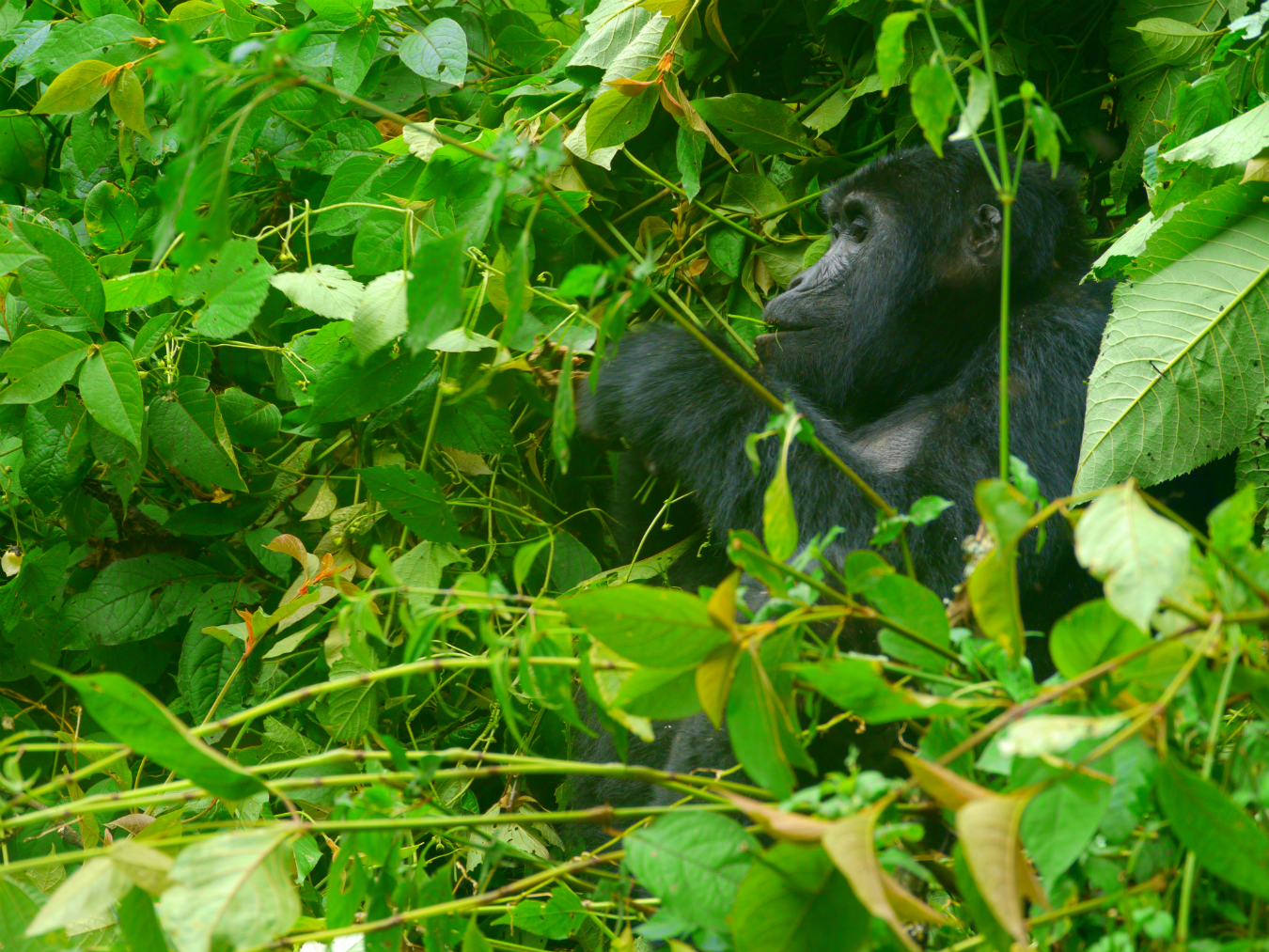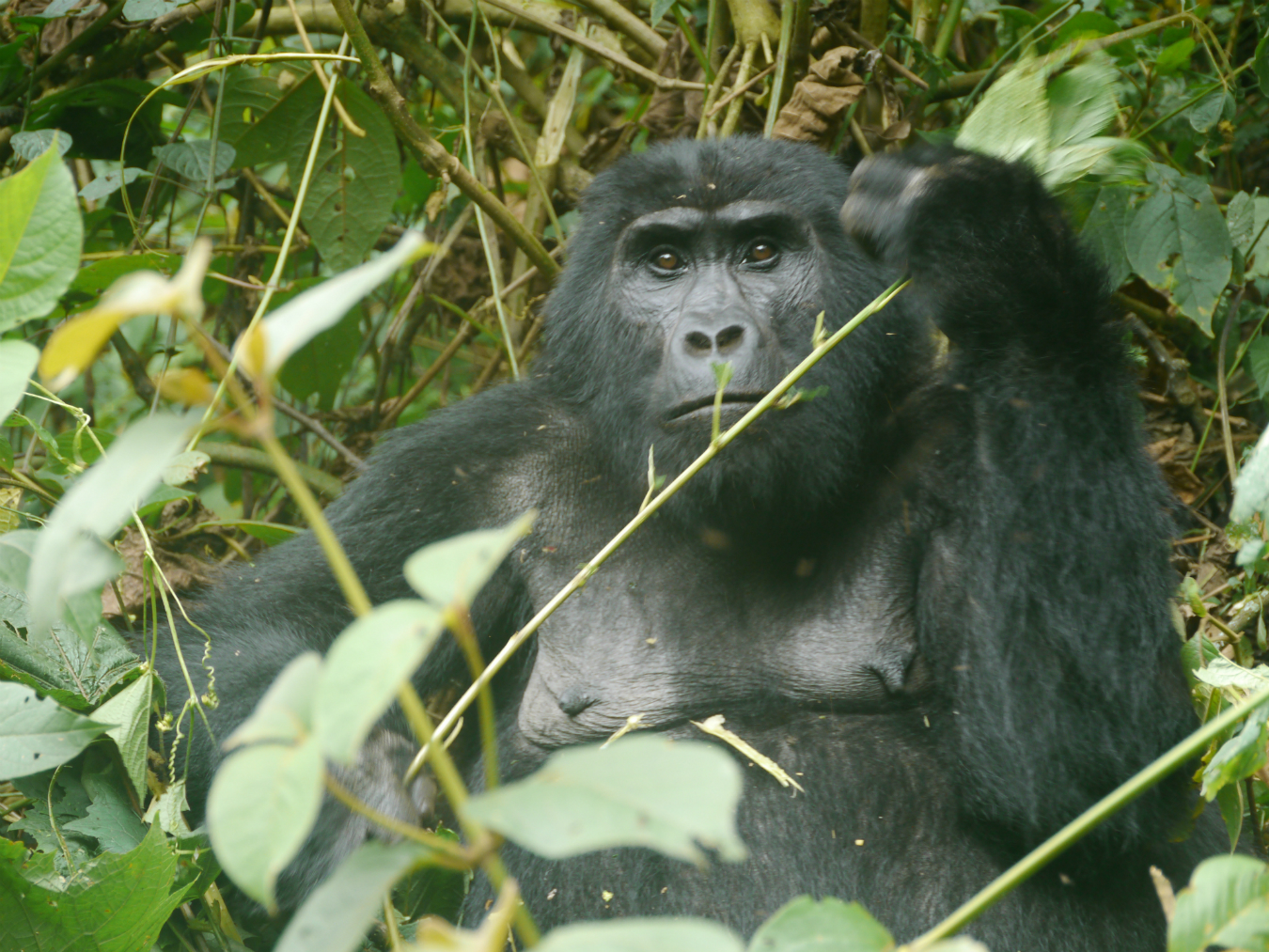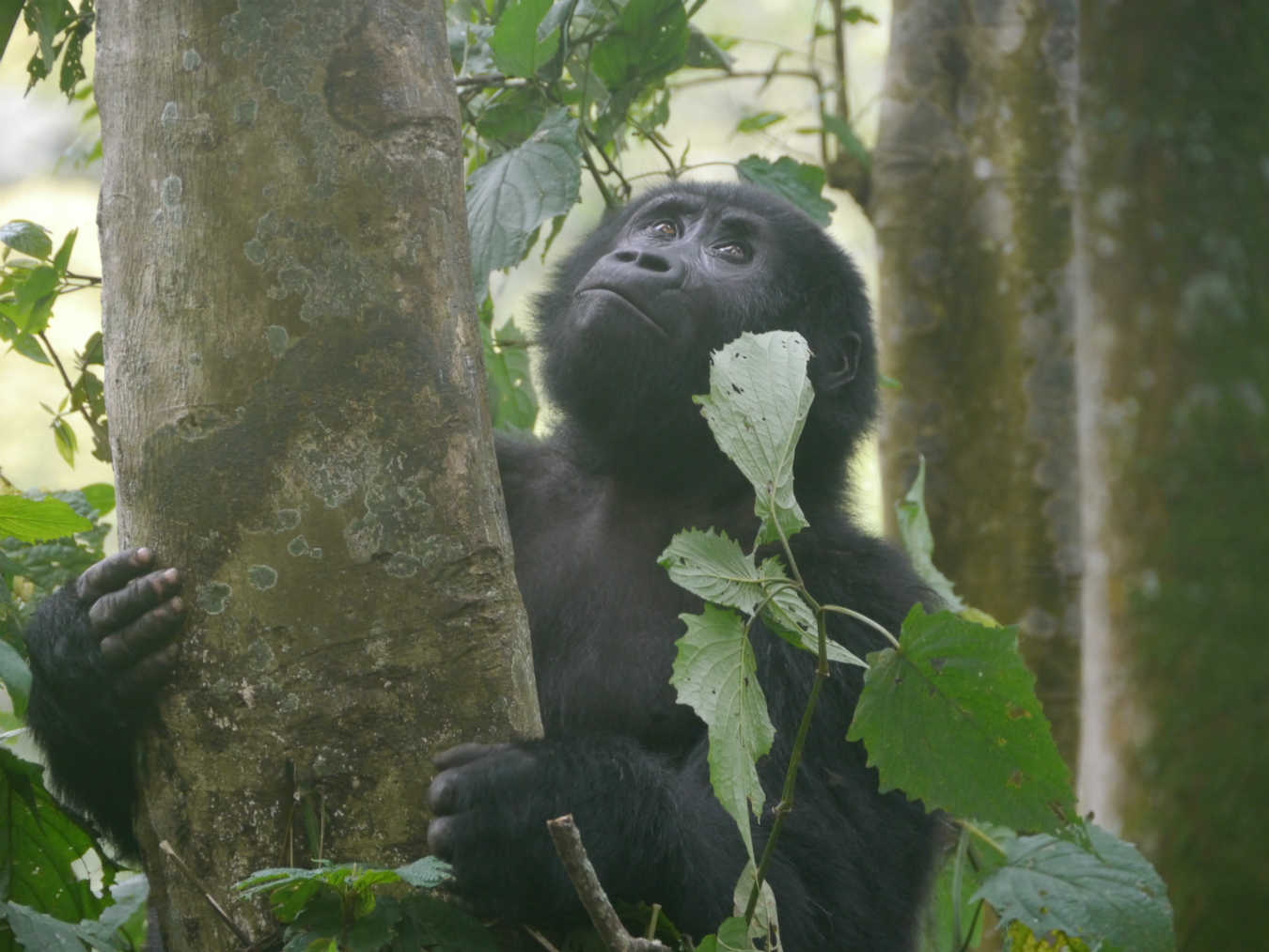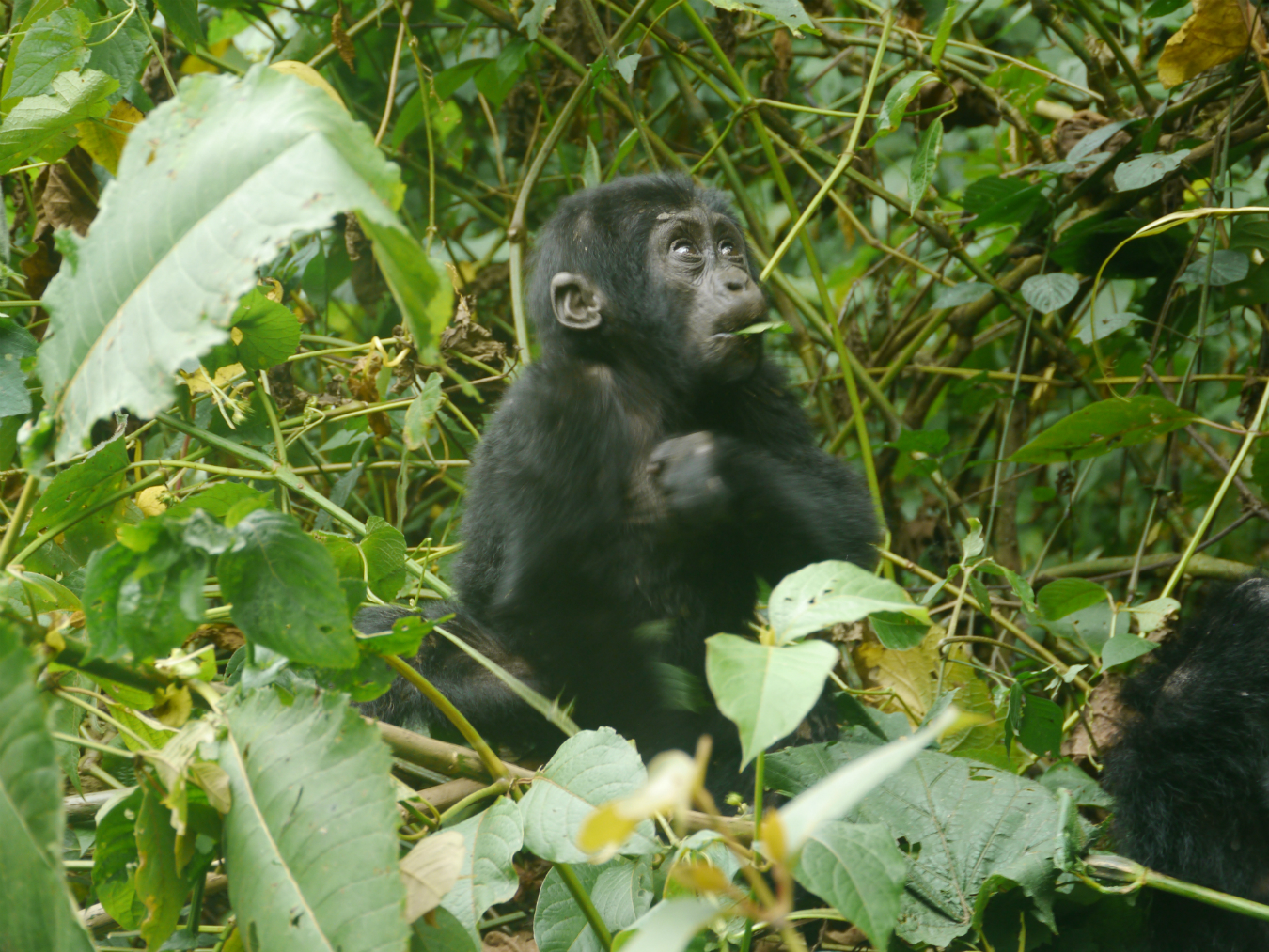A small black arm reaches out, and I sit as still as I can, hoping against hope that the baby mountain gorilla will climb down and touch me.
Instead, the one-year-old tumbles from the branch, performs two somersaults, and gets distracted by a delicious-looking leaf, which he stuffs in his mouth. We try to muffle our giggles.
Gorilla trekking can be unpredictable.
All of the world’s mountain gorillas—there are just 880—live in the mountains of Uganda, Rwanda, and the Democratic Republic of the Congo. Half live in the Virunga Mountains, along the borders of all three countries; the other half live further north in Uganda’s Bwindi Impenetrable Forest national park. None survive in zoos. Thanks to successful conservation efforts, the population of these critically endangered primates has been growing.
Fit visitors can trek into the rainforest to try to see them—but some sightings are easier to come by than others.
Each morning in the Ruhija region of Bwindi, trackers search for the nests of the five gorilla families that are habituated with humans. Following trails of crushed vegetation, footprints, and droppings, they almost always find each family somewhere in the Impenetrable Forest. When they do, the trackers radio the park rangers, who are already leading their groups of tourists up the paths.
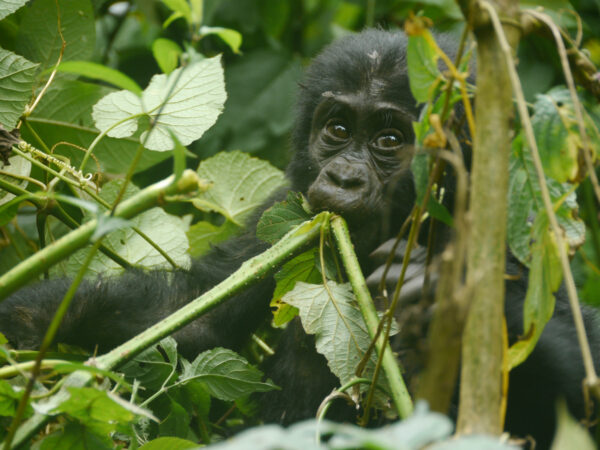
Mountain gorillas are the world’s largest primates and can weigh up to 440 pounds. They need a lot of food, and spend their days looking for it throughout their 41-kilometre-squared home range. This can make it difficult for the humans wanting to catch a glimpse of them.
At the beginning of the day, I think our group is lucky. We walk up a wide path for only 45 minutes and then receive the radio call that the trackers have spotted our “assigned” gorilla family. We’re at altitude—our base camp briefing was at 7,700 feet—so we huff and puff a little. But the going has been easy. In comparison, I heard about a recent group that followed the gorillas for a seven-hour trek, before the family decided to rest in a clearing just 20 minutes from the briefing area. The animals’ itineraries can’t be foretold.
While we congratulate ourselves on having an “easy” family to find, our ranger, John Tugumisirize, interrupts with a complication. The silverback from another family has recently stolen two females from ours, and it seems that our silverback has taken off to try to get them back. The remaining seven gorillas, all females and their young, will therefore likely be skittish without the male’s protection.
Tugumisirize takes out his machete and begins to hack a trail through the jungle. Leaving our nice wide pathway, we follow him into the dense, dry forest. After just a few minutes, though, we realize we are surrounded by gorillas. Trying to adjust our cameras for the dim light, we snap photos. But they are soon on the move.
During a typical mountain gorilla encounter, the family sits in a clearing where they groom each other, eat, and watch the juveniles play. Humans are allowed to watch for an hour and take photos from a distance of 23 feet.
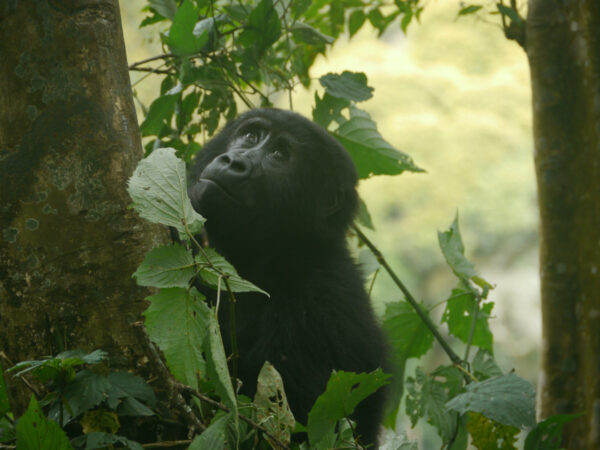
We don’t have a typical encounter, however. The gorillas don’t know about the 23-feet rule, and can come as close to us as they want.
With their silverback picking fights and rescuing maidens, our gorillas don’t sit still for long. They surprise us, coming out of the surrounding trees (which is when I thought the baby might touch me)—but they don’t seem to mind our presence in the least. The younger ones put on a few acrobatic performances while we ooh and ahh under our breath. The mother of the one-year-old eyes us on occasion, jaws grinding through endless helpings of leaves. But mostly they ignore us while they search for and eat food.
Following the gorillas through the rainforest isn’t easy, but it is manageable. The family doesn’t move quickly, and they stop frequently; sometimes we follow them, and sometimes they follow us. We walk mostly downhill, occasionally needing to grab onto vines to prevent a steep descent from turning into a somersaulting tumble. We know we’re not as agile as the baby gorilla.
Our biggest challenge comes when it is time to head back. Distracted by how close the gorillas have come, we had not realized just how far we’d descended into the valley. Our unconventional journey with the gorillas has led to an outcome we failed to predict: we need to climb back up to return to base. This is when I realize just how impenetrable the Bwindi Impenetrable Forest really is.
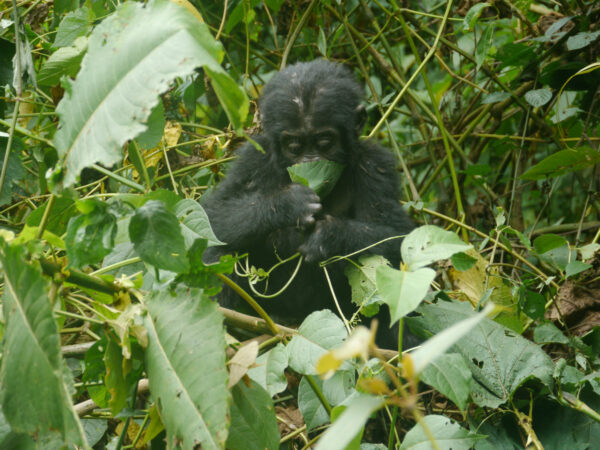
The trackers return our walking sticks to us (they hide them from the gorillas, who find them threatening). The sticks are essential for our ascent. To climb the 75-to-80-degree slopes, I need to haul on a vine with one hand while using the other on the stick to lever myself up.
Sweaty and covered in dirt, we’re exhilarated and exhausted when we finally arrive back at base. The already-returned rangers greet us with applause and encouragement: “Congratulations for penetrating the impenetrable!” The only thing you can guarantee about a Ugandan mountain gorilla experience is that each one will be different, and each one will be amazing.
Read more stories from our Impact section.
